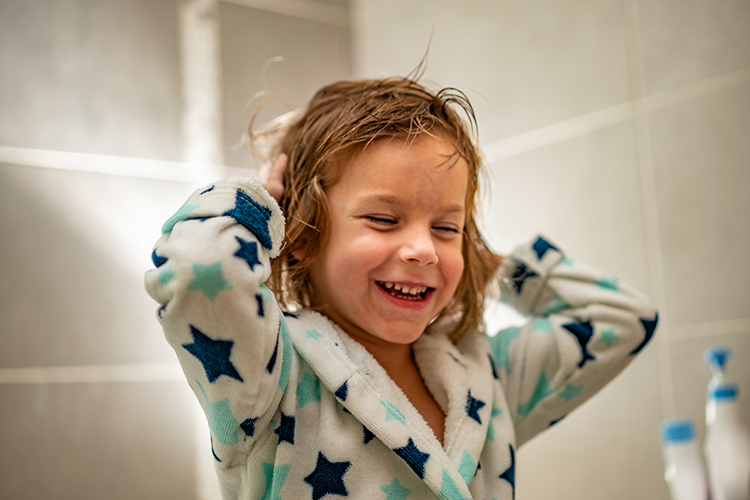Lice infestations are a common nuisance that can affect people of all ages, particularly children. These tiny, wingless insects are highly contagious and can spread quickly through direct head-to-head contact or by sharing personal items such as combs, hats, or pillows. To effectively combat lice, it is crucial to understand their life cycle and the various stages of lice.
What is the The Life Cycle of Lice?
There are three basic stages of head lice from inception to adulthood: the nit stage, the nymph stage, and the adult stage. Each stage is different, and the time it takes to complete each stage varies. Here is everything to know about each stage of the life cycle of lice.
The Nit Stage
The life cycle of lice begins with the nit stage. Nits, also referred to as lice eggs, are the eggs laid by adult female lice (typically near the base of the hair shafts, close to the scalp). Nits are small, oval-shaped structures that are usually yellowish or whitish in color. They attach themselves firmly to the hair shafts using a glue-like substance, which ensures their stability and protection. Although they are often mistaken for dandruff or hair debris, lice eggs are more difficult to remove as they are firmly attached.
It takes approximately 8 to 9 days for nits to hatch. However, the hatching period can vary depending on factors such as temperature and humidity. Identifying the lice egg stage early on is crucial for preventing the further spread of lice infestation.
The Nymph Stage
Once the nits hatch, they release nymphs, which are the immature forms of lice. Nymphs closely resemble adult lice but are smaller in size. They go through three nymph stages: the first nymph, the second nymph, and the third nymph.
During each nymph stage, the nymph molts, shedding its exoskeleton to accommodate its growing body. This molting process occurs approximately every 7 to 10 days, but once again, environmental factors can influence the duration. After each molt, the nymph emerges with a new exoskeleton, gradually increasing in size.
The Adult Stage
After completing the third nymph stage, the lice reach adulthood. Adult lice are fully developed and capable of reproduction. They are approximately the size of a sesame seed and have six legs equipped with claws. These claws allow them to grip onto hair strands and move around swiftly.
Female adult lice have the ability to lay eggs, perpetuating the life cycle. They can lay up to six eggs, or nits, per day. The lifespan of an adult louse is typically around 30 days, during which they feed on human blood multiple times a day to survive and reproduce.
It is important to note that lice are obligate human parasites, meaning they rely on human blood for their survival. They cannot survive for more than a couple of days away from the human scalp, as they require the warmth and moisture provided by their host.
Treatment of Head Lice: How to Break the Cycle

Understanding the life cycle of lice and the stages of lice is crucial for effective prevention, treatment, and management strategies, especially the beginning stages of lice. Here are a few ways to both prevent and treat head lice:
Regular Screening: Periodic checks for lice and nits, especially among school-age children, can help detect infestations early on. Vigilance is essential, as early detection can prevent the further spread of lice.
Proper Hygiene Practices: Avoid sharing personal items such as hats, combs, brushes, scarves, and hair accessories. Be sure to educate your children about the importance of maintaining personal hygiene and avoiding head-to-head contact.
Prompt Treatment: In the event of an infestation, it is important to seek appropriate treatment promptly.
Lice Clinics of America has also developed an FDA-cleared medical device known as AirAllé, desiccates lice and nits. For a truly comprehensive lice treatment experience, we recommend the use of the AirAllé, a professional comb-out, and the treatment of dimethicone. Dimethicone works excellently on hatched lice, and the AirAllé device rounds out the process by successfully exterminating unhatched nits.
The AirAllé device uses carefully controlled heated air to dehydrate and kill head lice. It has been proven to kill live lice and 99.2 percent of lice eggs, and the entire process takes about 90 minutes.
To learn more about lice prevention and tips for treatment, visit our blog or find a Lice Clinic near you.

